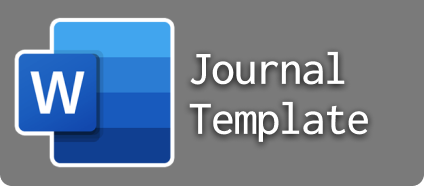ANALISIS KADAR NITROGEN PADA PUPUK UREA, PUPUK CAIR DAN PUPUK KOMPOS DENGAN METODE KJELDAHL
DOI:
https://doi.org/10.22373/amina.v1i1.11Keywords:
fertilizer, nitrogen, SNI 19-7030-2004., analysis, KjeldalAbstract
This study aims to quantify the nitrogen level in the three different forms of fertilizer product: urea, compost, and liquid fertilizer manufactured by local Acehnese companies and compare it to the Indonesian National Standard (SNI) 19-7030-2004. All samples were analysed by using Kjeldahl method which consists of three steps: destruction, distillation, and titration. The analysis shows that the concentration of nitrogen in the urea, compost, and liquid fertilizer is 46.04; 2.79, and 0.0360% respectively. The results indicates that, when the data were compared to the value of nitrogen level in the SNI, both urea and compost are qualified to be released to national market. However, since the content of nitrogen in the liquid product is below the SNI, the latter fertilizer might not be considered as a qualified product in the term of nitrogen level.
References
Hakim, N. 1986. Dasar-dasar Ilmu Tanah. Lampung: Universitas Lampung.
Kemenperin. 2015. Roadmap Baristand Industri. Banda Aceh: Baristand. Hlm.2.
Kemenperin. 2013. SNI: Cara Uji Kadar Nitrogen Total Sedimen dangan Distilasi Kjeldahl Secara Titrasi. Jakarta: Badan Standarisasi Nasional.
Lakitan, B. 2008. Dasar-Dasar Fisiologi Tumbuhan. Jakarta: PT Raja Grafindo Persada.
Lingga, P. 2008. Petunjuk Penggunaan Pupuk. Jakarta: Penebar Swadaya.
Lingga & Marsono. 2007. Petunjuk Penggunaan Pupuk. Jakarta: Penebar Swadaya.
Pratiwi, R. S. 2008. Uji Efektivitas Pupuk Anorganik pada Sawi (Brasiica juncea L.). Skripsi. Universitas Sumatera Utara.
Samekto, R. 2008. Pemupukan. Yogyakarta: Aji Cipta Pratama
Samekto, R. 2006. Pupuk Kompos. Klaten: Intan Sejati.
Setyorini, D. 2003. Persyaratan Mutu Pupuk Organik untuk Menunjang Budaya Pertanian Organik. Disampaikan pada Seminar Sehari Penggunaan Pupuk Organik. Yogyakarta: BPTP.
Sunu, P. dan Wartoyo. 2006. Dasar Hortikultura. Surakarta: UNS Press.
Downloads
Published
Issue
Section
License
Amina Journal a uses license CC-BY SA
Amina Journal uses license CC-BY-SA or an equivalent license as the optimal license for the publication, distribution, use, and reuse of scholarly works.
This license permits anyone to compose, repair, and make derivative creation even for commercial purposes, as long as appropriate credit and proper acknowledgement to the original publication from Amina Journal is made to allow users to trace back to the original manuscript and author.
Readers are also granted full access to read and download the published manuscripts, reprint and distribute the manuscript in any medium or format.






















